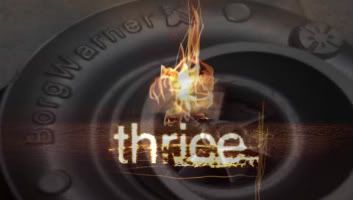About a year ago, I was talking to my dads friend at a minekie, or however its spelled, when he was putting my muffler on. I had originally wanted him to install a 2.25 inch stainless exhaust from the cat back. He suggested I keep the stock pipe, because he said it wont do me any good, he did go into some detail, and it sounded convincing. I really trust him, but i just wanted to know what you think.
I have an injen wai, and a muffler. I really want to finish it off with a obx header and a custom exhaust, 2.25 or 2.5 inch pipe with no resonator. What do you think?

finish it off dude.
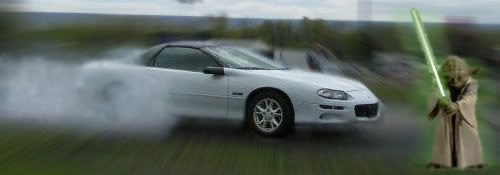
Im a Xbox 360 fanboy...and damn proud of it!!
Why would you keep the stock pipe if you can get a shiny new 2.25? Atleast you know there's always a place for the extra exhaust to go if you ever turbo it.
2.25" is an improvement even for stock J-cars. It is just about perfect size for a N/A application. If you want to go boost or Nitrous Oxide, then you'll actually want a 2.5" (or maybe 3" for a heavily turbocharged setup).
That exhaust guy doesn't know what he's talking about - at least as far as performance is concerned. He probably thinks your car only makes 70-80 HP anyways lol.
Now you might as well get the a resonator - unless you want to get hassled by the cops all the time over your exhaust. Personally I've had enough of that. The kind of resonator that looks like a plain pipe with alot of holes in it - aka a perforated type resonator - that kind of resonator is not going to make you loose power.
I've never heard of this "part throttle" before. Does it just bolt on?
The muffler shop guy might have sounded like he knew what he was talking about, but he probably didn't want to go through the hassle of bending all that pipe custom. I went to a shop to have my muffler put on, and asked him for a quote on 2.25" from cat back, and he told me flatout he wouldn't because it was a hassle to him. So I let him finish, paid him the 40 bucks for mounting my muffler, and zoomed away, gonna find a new shop that WILL do the 2.25".
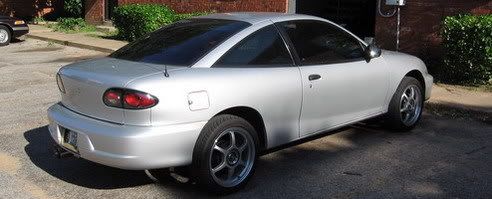
This is why your better off buying and eftermarket exaust already made for your car, installing it yourself with exaust clamps, and driving streight to an exausr shop to have it re-adjusted and welded up, thats what I did, because unless your driving a Camaro, most exaust shops don't wan't to put a high flow exaust on your car, and they always tell you it won't run right like that. I'ts prooven that mandrel bent pipe flowns much better thant your stock, wrinkly exaust, so that answers your your cat back question. Secondly, if your going to run a headder with no resonator and cat back exaust like me, make sure you install a new cat or keep your old one on, and if you running N/A you might want a chambered muffler, to keep torque up and noise down. I've got a streight through monza on mine, and it's a little too loud, and I lost a bit of low end torque. I installed my exaust with plans on boosing the car (wich this setup should be good for) but it's a little too free flow for N/A.

Why spend all that money for a mandrel bent exhaust when PVC is a whole lot cheaper!
Just have it ceramic coated, and paint it with a high temp paint!

-Matt
-------------------------------------------------------

Weebel wrote:This is why your better off buying and eftermarket exaust already made for your car, installing it yourself with exaust clamps, and driving streight to an exausr shop to have it re-adjusted and welded up, thats what I did, because unless your driving a Camaro, most exaust shops don't wan't to put a high flow exaust on your car, and they always tell you it won't run right like that. I'ts prooven that mandrel bent pipe flowns much better thant your stock, wrinkly exaust, so that answers your your cat back question. Secondly, if your going to run a headder with no resonator and cat back exaust like me, make sure you install a new cat or keep your old one on, and if you running N/A you might want a chambered muffler, to keep torque up and noise down. I've got a streight through monza on mine, and it's a little too loud, and I lost a bit of low end torque. I installed my exaust with plans on boosing the car (wich this setup should be good for) but it's a little too free flow for N/A.
Keeping torque is a function of the exhaust size piping you choose, not from backpressure. Backpressure does not help any part of your powerband. Going with larger exhaust pipes means that exhaust pulse velocity is lost in favor of increased capacity. That means that you loose some torque to gain more HP. It is a trade but you should come out ahead. If you are totally unwilling to sacrifice torque at all, then you still could go with a stock sized pipe - only with mandrel bends and a high flow muffler. You'll gain (not very much though) across the power band.
I've never heard of this "part throttle" before. Does it just bolt on?
WhitePhatt wrote:Why spend all that money for a mandrel bent exhaust when PVC is a whole lot cheaper!
Just have it ceramic coated, and paint it with a high temp paint!

-Matt
@!#$, don't say that. Some n00b might just go out and try it...

Anyways, we put a Megan Racing catback on my ex wife's 2200 OHV (2.5" outside diameter after the cat flange...at the cat flange it narrows to stock size though). Never noticed any kind of loss of power - I felt like it gained a little bit, she didn't really think so, but either way, definitely didn't seem to lose any power, either down low or up top. While some have said that you don't want bigger than a 2.25", it seems for any of the J's you're fine with a 2.5" exhaust for NA if you choose, especially if you're considering the header as well.
Another thing to consider - if you do want to put a header on it, pay attention to the collector diameter on the header. If you do go with a 2.5" exhaust from the cat back, then I'd look for a header with a collector that's at least 2.5" as well (I believe the OBX is 2.25"). Reason being there's no point in putting a 2.5" catback exhaust on and having a header collector and cat that are 2.25" (the smallest diameter in your exhaust will always be the bottleneck). Best way to control that is with custom parts after the header, although I'm considering going with a Pacesetter header and a 2.5" high flow cat with a flange welded on to connect to the catback, which would be a Megan Racing catback with their flange cut off and a ~18", 2.5" diameter resonator welded into the first section...along with a 2.5" flange to bolt to the cat (don't know if that all makes sense). Might be a bit of hassle to have the resonator installed (with the cutting and welding to the catback), but it's a lot less work for a shop to do than bending and welding a whole custom catback. Plus the Megan Racing catback is pretty cheap to come by on eBay and really is pretty well made, other than the crappy slip-fit, C-clamp connection.
hahahahaha sorry.


-Matt
-------------------------------------------------------

Bastardking3000 wrote: That means that you loose some torque to gain more HP. It is a trade but you should come out ahead. If you are totally unwilling to sacrifice torque at all, then you still could go with a stock sized pipe - only with mandrel bends and a high flow muffler. You'll gain (not very much though) across the power band.
Sorry, but your car cannot gain horsepower while losing torque. Torque and horsepower are directly related via the following formula:
Torque = horsepower X (5252/rpm)
At any given rpm, if horsepower goes up, torque goes up.
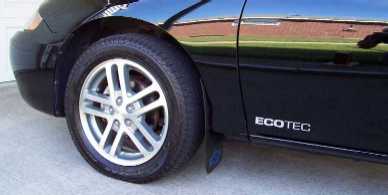
Lees04Cav wrote:Bastardking3000 wrote: That means that you loose some torque to gain more HP. It is a trade but you should come out ahead. If you are totally unwilling to sacrifice torque at all, then you still could go with a stock sized pipe - only with mandrel bends and a high flow muffler. You'll gain (not very much though) across the power band.
Sorry, but your car cannot gain horsepower while losing torque. Torque and horsepower are directly related via the following formula:
Torque = horsepower X (5252/rpm)
At any given rpm, if horsepower goes up, torque goes up.
I'm afraid that you either -
1. Are mistaken.
2. Do not understand what I meant.
3. Or both.
Despite actual definitions - Torque is generally used to describe power in the lower RPM ranges and HP used to describe power in higher RPM ranges. Perhaps you haven't seen many DYNO sheets of before and after on various parts. For example, if you where to get a larger throttle body, you will loose some power across lower RPM area(where there is less airflow occurring) and will gain power in the higher RPM area(where airflow is higher). Of course if you use a throttle body that has a higher CFM capacity than your intake manifold(etc), then you're really not going to see as big a HP gain as you will see a Torque loss - but that is another matter.
I think your misunderstanding comes from not realizing that much more air is flowing through your engine at high RPM than at low RPM. At low RPM, the total airflow capacity of the engine is not able to be fully utilized. If you always kept at lower RPM, then ideal sizing for your entire intake and exhaust systems(including inside the head for both) are going to be much smaller in diameter(in order to maintain optimal velocity), where as an engine kept at high RPM would actually want a larger diameter intake and exhaust system to raise the capacity limitations.
Go get a straw and the cardboard from a roll of paper towels. Blow a small amount of air through both of them - and note how it flows much faster through the straw. Then blow as hard as you can through them - noting that the straw is now a severe limitation and it will flow much better though the cardboard piece.
I think you get the point. Going with a larger size pipe, at lower RPMs, he will make less power, and at higher RPMs he will gain power. Simply put, he will not be able to launch quite as hard but he will make up for it as soon as his car gets going - and will come out ahead. Now if this isn't a car to race, but rather a stop-and-go traffic car that will rarely reach high speeds, low RPM power is much more useful. On the other hand, if this is a car intended to be fast, then higher RPM power is much more useful since the engine is more productive at making power in high RPMs.
I've never heard of this "part throttle" before. Does it just bolt on?
Bastardking3000 wrote:
Despite actual definitions - Torque is generally used to describe power in the lower RPM ranges and HP used to describe power in higher RPM ranges. Perhaps you haven't seen many DYNO sheets of before and after on various parts. For example, if you where to get a larger throttle body, you will loose some power across lower RPM area(where there is less airflow occurring) and will gain power in the higher RPM area(where airflow is higher). Of course if you use a throttle body that has a higher CFM capacity than your intake manifold(etc), then you're really not going to see as big a HP gain as you will see a Torque loss - but that is another matter.
"Despite actual definitions"? Are you kidding? Torque is defined in any basic physics book and represents a given amount of rotational work expressed in ft-lbs (in the English system). Crank Horsepower is a function of torque/time. The greater the torque, the greater the horsepower. One horsepower = 550 ft-lbs of work accomplished in one second. Translated to rotational work (torque) and rpm (minute of time vice second), the formula is horsepower = torque x (rpm/5252). This is a given fact. You cannot redefine the properties of torque and horsepower. I have seen many dyno runs showing torque and horsepower and the relationship is always the same. Have you ever noticed that horsepower and torque are always equal at 5252 rpm? That's because the formula works.

Lees04Cav wrote:The greater the torque, the greater the horsepower.
...at a given RPM
Whether you thought about it this way or not (I imagine you didn't mean to, and I think the confusion lies in the specifics, what was and wasn't said and/or understood or misunderstood), what it sounds like you're saying is that if you increase your peak torque, you will also increase your peak horsepower. There's no way to be certain of that. While generally it works out that way (because you see gains across the powerband), there is no reason to assume it ALWAYS will - your peak torque and peak HP would have to be at the same point, which is rarely ever the case.
For example - A car, before a certain mod, has peak horsepower of 150 whp and peak torque of 150 wtq - but those peaks are at different RPM points. Let's say the peak horsepower both before and after that mod comes at 6000 RPMs, and peak torque in both cases comes at 4000 RPMs. After that certain mod is added, the peak horsepower is now 155 whp but peak torque is 145 wtq. While this example isn't from any actual dyno chart I have in front of me, it's quite possible and realistic - perhaps the result of adding a 3" catback exhaust to a car...a little bit of torque was lost but horsepower was gained. Now if you actually looked at a dyno graph of that, the horsepower would also be lower after the mod at 4000 RPMs than it was before the mod, as would be the case of torque. And torque at 6000 RPMs, the point of peak horsepower, would be higher after the mod than before it.
The key is that torque is commonly pointed to as the number to watch for if you want low end power, and horsepower to be the number to look at for high end power. This is simply a matter of convenience - torque numbers tend to be higher in the low to mid range and taper off, where horsepower numbers build from the lower RPMs. It would be hard to associate "low end power" with a number like 50 whp at 4000 RPMs when a few thousand RPMs higher the number has climbed to 150 whp. 50 whp sounds like a small number and regardless of where it goes, it's just not as easy to visualize as comparing a peak number. You can look at low end horsepower numbers to determine low end power - it's just distracting that they are usually WAY lower numbers than they are higher in the range.
Lees04Cav wrote:Bastardking3000 wrote:
Despite actual definitions - Torque is generally used to describe power in the lower RPM ranges and HP used to describe power in higher RPM ranges. Perhaps you haven't seen many DYNO sheets of before and after on various parts. For example, if you where to get a larger throttle body, you will loose some power across lower RPM area(where there is less airflow occurring) and will gain power in the higher RPM area(where airflow is higher). Of course if you use a throttle body that has a higher CFM capacity than your intake manifold(etc), then you're really not going to see as big a HP gain as you will see a Torque loss - but that is another matter.
"Despite actual definitions"? Are you kidding? Torque is defined in any basic physics book and represents a given amount of rotational work expressed in ft-lbs (in the English system). Crank Horsepower is a function of torque/time. The greater the torque, the greater the horsepower. One horsepower = 550 ft-lbs of work accomplished in one second. Translated to rotational work (torque) and rpm (minute of time vice second), the formula is horsepower = torque x (rpm/5252). This is a given fact. You cannot redefine the properties of torque and horsepower. I have seen many dyno runs showing torque and horsepower and the relationship is always the same. Have you ever noticed that horsepower and torque are always equal at 5252 rpm? That's because the formula works.
I don't think you get the point...
I am well aware of the scientific definition of torque, horsepower, and many other things. No offense to you and I don't mean to sound as if I'm completely full of myself, but I severely doubt you're going to be able to teach me anything about (automotive-related or not) mathematics, physics, engineering, or anything of the sort. Once again I'll restate this - I am referring to how the terms are commonly used - the fact that they are used contrary to their actual definition is irrelevant and it is not at all uncommon for this to happen to many terms and ideas.
I'll give you another common example of this - "acceleration." It is actually defined as
any change is speed or direction. But... it is not commonly used that way is it? It is commonly only used to mean
an increase in speed. In reality, braking or steering is a form of acceleration too. People often say "deceleration" to refer to slowing down - but that isn't even really a word and the very concept is misinformed. But still... when people use it, do you not know exactly what they mean? I usually do not correct people when they say this. I just let it go.
No, I'm not trying to redefine anything - but this terms have been (mis)used this way since before I was born. It is not going to stop anytime in my lifetime, so why bother trying to fight it? I just try to use terminology in a way that most people can easily understand because it is just plain easier that way.
And I still don't think you understand that no part is going to have an equal effect on your entire powerband. Yes, it IS actually quite possible to see a loss of power in one RPM range and a gain in another RPM range. Not only is it possible, but it is quite common too. If you've really seen that many DYNO sheets, I'd think you'd know that by now.
Compare these 2 dyno sheets for these 2 camshafts(no they aren't for anything J-body) -


Notice anything?
The first one has a higher Max Torque and
the second one has a higher max HP. No they aren't using identical setups as those links show - but the point still stands. The first setup makes more power in the lower RPM ranges while the second setup makes more power in higher RPM ranges. The first one is gonna produce a better tire-fryer but the second one will likely produce an overall faster car. You see that your "power is all the same" theory just went out the window.
I've never heard of this "part throttle" before. Does it just bolt on?
tell the meineke guy to STFU
go 2.5" MANDREL bent
use a resonator.. and a cat if you want (cat will keep it really quiet (moreso than the resonator) and emissions legal)
chambered mufflers usually sound better.. quieter at idle, and not raspy like a straight thru 'fart can' style muffler.
if you plan on porting the head or going much further than basic bolt ons (intake, header, exhaust) you may want to consider 3" exhaust.
trust me.. you won't notice a loss of torque or power.
3" flows quite nicely in my humble opinion..
but is a bitch to get it to fit so 2.5" might be more for you.
2.25" pipe isn't worth the effort.
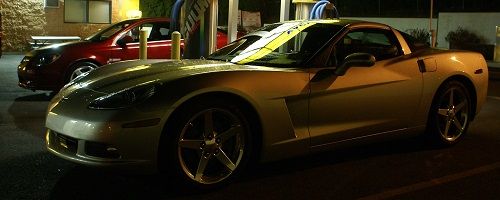
Bastardking3000 wrote:I think you get the point. Going with a larger size pipe, at lower RPMs, he will make less power, and at higher RPMs he will gain power. Simply put, he will not be able to launch quite as hard but he will make up for it as soon as his car gets going - and will come out ahead. Now if this isn't a car to race, but rather a stop-and-go traffic car that will rarely reach high speeds, low RPM power is much more useful. On the other hand, if this is a car intended to be fast, then higher RPM power is much more useful since the engine is more productive at making power in high RPMs.
So if you drive an auto (that never really sees the high RPM's) and mainly want stop and go power for daily driving with the occasional case of lead foot, stock piping is best? What about choke points? I notice this cherrybomb resonator I have (though 2.25" in/out) actually chokes down to about stock size for most of it's length.

Steve from PA wrote:Bastardking3000 wrote:I think you get the point. Going with a larger size pipe, at lower RPMs, he will make less power, and at higher RPMs he will gain power. Simply put, he will not be able to launch quite as hard but he will make up for it as soon as his car gets going - and will come out ahead. Now if this isn't a car to race, but rather a stop-and-go traffic car that will rarely reach high speeds, low RPM power is much more useful. On the other hand, if this is a car intended to be fast, then higher RPM power is much more useful since the engine is more productive at making power in high RPMs.
So if you drive an auto (that never really sees the high RPM's) and mainly want stop and go power for daily driving with the occasional case of lead foot, stock piping is best? What about choke points? I notice this cherrybomb resonator I have (though 2.25" in/out) actually chokes down to about stock size for most of it's length.
No the stock pipe is a wrinkled innefficient POS, so it really isn't best for this(or anything aside from noise reduction - but resonators could close that gap)at all. It's size might be though, if the pipe where of better quality. I still wouldn't bother replacing it with a pipe the same size even if it is better - because IMO the minimal gain wouldn't justify the cost.
As for mentioning that your current pipe is about stock size at some points... well it can only flow as much as the smallest part will allow. Having some parts bigger than others only serves to lower velocity. Having only part of your pipe being bigger does not increase the capacity over what the smallest part is willing to flow. If your resonator actually chokes the exhaust down to stock size(while the rest is 2.25"), I'd get a different resonator on there. Be sure to actually good at the new resonator before you buy it if you can. Might I guess that your current one is not a perforated resonator? The other type is not good for flow at all.
I'm running out of post for the month so I probably won't reply any more to this thread.
I've never heard of this "part throttle" before. Does it just bolt on?
^^
Looks like the Thrush.
I had to return mine.
Got it from Summit so it was no hassle.
That core is hella small, 1 3/4".

-M
Remember....syringes go in the RED waste basket.
Yep, the internal diameter is smaller than stock I think. What brand did you end up going with?

Well,
They make a SS version of it now, its friggin $99.95
But its the same size core as the id/od.
Now if you go 2.5" or larger, you can use Magnaflow mufflers n such.
Or the thrush ones like the red one you, but their hella long.
-M
Remember....syringes go in the RED waste basket.
Steve from PA - wow your glasspack sucks. That looks like Thrust from the outside(same color at least), but is it? You're lucky that it isn't on there yet - so you could and should return it ASAP. I'm using a $30(from Advanced Auto) Thrush one on one of my cars, I bought a 2.5" in/out, and I don't have that problem. By core isn't noticeably smaller at all.
As it where though, I couldn't technically say that it is exactly 2.5" in/out, since it fit PERFECTLY over top of my 2.5" exhaust pipe without having to use a tailpipe expander or anything. It fit so well that I almost could have got away without welding it - but I did anyways.
In any case, for whatever you choose for a replacement, you should visually observe the product to make sure that the next one doesn't have that problem.
I've never heard of this "part throttle" before. Does it just bolt on?
ok, the Magnaflow 2.25" exhaust for the LD9, is it worth getting that to mate up with my 086 head, and HO mani? or should i go custom 2.5". if i go custom 2.5" what all should i get with it? i know next to nothing about exhaust systems and purchasing them so i need a little advice on what to purchase that will sound throaty yet quiet without any rice to it.
